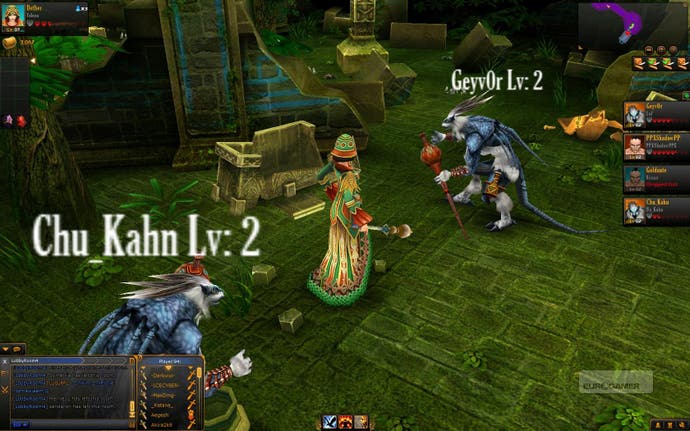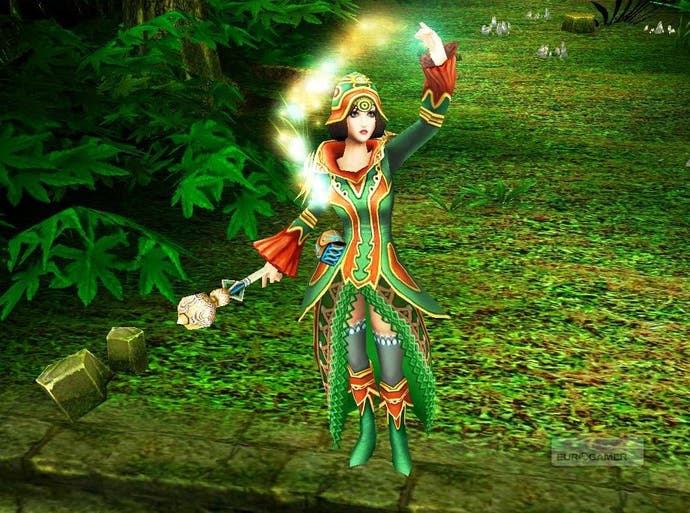Warrior Epic
Epic fail?
Most people may well want to spend most of their time doing runs in the game's dungeons, which themselves are randomised in terms of their room sizes and layouts, mobs and drops, depending on the size of your group, your level and so on. But there will also be gamers who are drawn to the "dollhouse" element of the game. Developer Possibility Space wants you to play around with your Hall, managing your warriors, customising them, customising your kit with Spirits, and even customising the Hall itself. This can be done by adding new rooms like workshops (which provide skill buffs) and trophy rooms (for your achievements, which can be publicly displayed).
The Hall's most important room, however, is the War Room. When you join a game created by another player, you gather in their War Room, or if you create a game, you choose the type of run from your own War Room. The game offers three different modes of play, which you select by clicking a map on a table in your War Room. Adventure Mode consists of 1-5 player player-versus-environment quests; Campaign Mode offers more PVE, but in the form of a story, effectively continuing on from that very first run you had, hacking your way through umpteen dungeons full of randomised monsters, boss mobs and the soldiers of the enemies of Providence. The third mode is PVP for players above level 10, though it's yet to be implemented.

Whatever mode you play, the game does encourage co-operation. The make-up of your group for a dungeon run has strategic implications. For example, the Pangolin class, the game's only non-humans who resemble vaguely humanoid archaeopteres, has two sub-classes: the Shaman and the Tamer. Using elemental magic, the former can drop totems, which mobs tend to attack, giving you some breathing space when facing massed foes and the opportunity for throwing in ranged damage. Shaman also get heals from level 16. Tamers, meanwhile, have the ability to call on creatures.
Other crowd-control, meanwhile, can be offered by the self-explanatory Trapper, a sub-class of the Assassin, a class that is defined by its use of firearms. For firearms-based damage, look to the Dead Shot sub-class. Ranged attack damage, meanwhile, comes care of the Dungeon Archer class, notably the Stalker sub-class. The other Archer sub-class is the Warden, which, in another novel twist, plays music on its bow-strings which can buff comrades or debuff enemies. Possibility Space certainly isn't short of imaginative ideas.

Magical damage comes care of the Illusionist class. The Spellbinder sub-class, in its natty Sergeant Pepper duds, is into messing with enemies' heads. The Necromancers, meanwhile, call upon dead minions. The latter are particularly adept at kiting, something you will find yourself doing a lot of in Warrior Epic. There's a lot of pulling, running, waiting for cooldowns, doing some damage, throwing some heals, and scarpering some more. It's a process that'll also likely become a lot more fluid when you can sup your own healing potions.
The final class is the sword-and-shield-wielding Devotress. Sentinels are a Paladin-ish hybrid who can fight melee, do some protective tanking - but also have a heal from level 1 and as such will spend a lot of their time peering at that ability icon waiting for its cooldown. The Avengers, meanwhile, get a bit emotional and unleash swift melee attacks.

Suffice to say, there's a lot going on in Warrior Epic. But at this early stage - effectively, still a public open beta - it still feels rough, and a long way from fulfilling its potential. If you can fight through installation issues, the game servers themselves are still pretty wobbly, and once you start playing, there are elements that many will find off-putting. Despite the randomisation, the dungeon running does get repetitive, especially as XP builds at a relatively slow rate. To gain XP, you may well find yourself running the same levels over and over, something that no randomisation can keep interesting. Of course, if you're lucky enough to get a good Guild and some well-oiled groups, dungeons can be blasted through more quickly.
Some may have reservations about the three-deaths-and-you're-done business, which can result in your losing out on hard-earned XP. Indeed, the target market for free-to-play games is the casual gamer - and it's the casual gamer who is most likely to run away from this situation, which due to the absurd state of affairs with the unavailability of health potions, remains unduly harsh. Gamers looking for semi-free (most cash shop items aside from health pots being for convenience and cosmetics), Diablo-style action may well find something to enjoy in this quick-fix "MORPG", but in all honesty, it wasn't ready for launch in May, and still isn't. True Games has already announced the game's first expansion, for July; it will involve the PvP mode and a new region, but let's just hope it also involves that item shop finally laying out some stock.